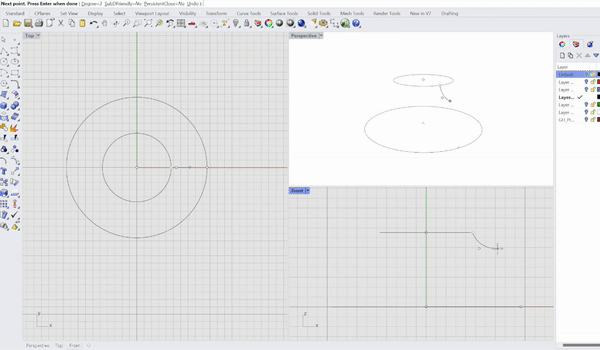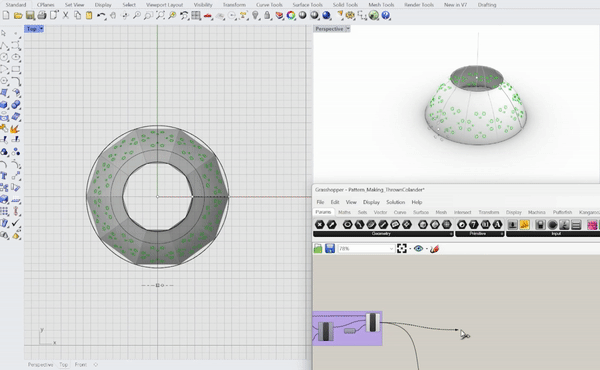CeramWrap

Mert Toka*, Samuelle Bourgault*, Camila Friedman-Gerlicz, and Jennifer Jacobs. 2023. An Adaptable Workflow for Manual-Computational Ceramic Surface Ornamentation. UIST 2023, San Francisco, USA.doi: https://doi.org/10.1145/3586183.3606726 *equal contribution to this research
Surface ornamentation is a rich component of ceramic manufacture wherein craftspeople use multiple methods to create intricate patterns on vessels. Computational fabrication can extend manual ceramic ornamentation through procedural pattern generation and automated fabrication; however, to be effective in traditional ceramics, computational fabrication systems must remain compatible with existing processes and materials. We contribute an interactive design workflow, CeramWrap, in which craftspeople can procedurally design and fabricate decorative patterned stencils tailored to radially symmetrical vessels. Our approach extends manual techniques through a workflow where craftspeople design and edit repetitive motifs directly on a 3D digital model of a vessel and then interactively adjust the unrolling of the 3D design to a 2D format suitable for digitally fabricating stencils and templates. Through a series of example artifacts, we demonstrate how our workflow generalizes across multiple vessel geometries, supports manual and digital clay fabrication, and is adaptable to different surface ornamentation methods.
This work is part of my Ph.D. in Media Arts and Technology at the Univeristy of Califronia, Santa Barbara in the Expressive Computation Lab. In Collaboration with Mert Toka, Camila Friedman-Gerlicz, and Jennifer Jacobs.
Presented at
UIST 2023, San Francisco, USA (Mert Toka)
The transformation process of wet clay into solid ceramics involves different drying and firing stages, during which the material undergoes shrinkage and distortion in unexpected ways.
To support the dynamic qualities of clay and the different spatial organization levels of decorative elements, CeramWrap’s computational tools include the parametric creation of patterns where a decorative element created in rhino is projected onto the surface of a digital model and modified in number, scale, rotation and translation using transform functions.

And a selective unrolling tool to generate a two dimensional patterned template.

A craftsperson engaging in the full workflow first fabricates a physical vessel, in this case throw a bowl shape on the wheel. Once the piece is made, it needs to dry to its ideal condition for a desired decoration techniques, here the craftsperson waits for the clay to be leather-hard. Taking measurements of the physical vessel, the craftsperson creates a digital model with simple Rhino functionalities and generates decorative elements using Rhino drawing tools. A pattern is then created with CeramWrap’s pattern generation tool. The pattern is unrolled and fabricated, here with a laser cutter. The template is then installed on the vessel. If the template doesn’t fit due to distortion, the craftsperson adjusts the model and re-generates the pattern until a desirable fit is achieved. The fitted template is installed and the decorations are applied through it. Here the pattern is first marked and then drilled on the piece. The decorated artifact can then follow the traditional ceramics pipeline, including drying until the vessel is bone dry, bisque firing and glaze firing in the kiln to get to the final piece.
Some more stuff made with CeramWrap!

c::